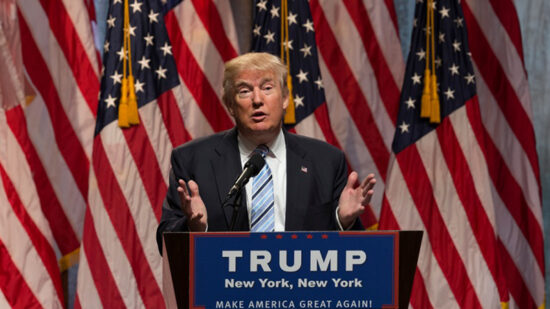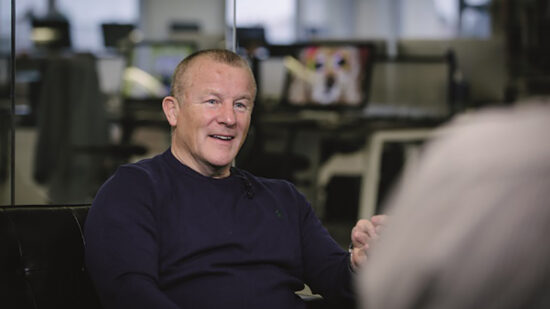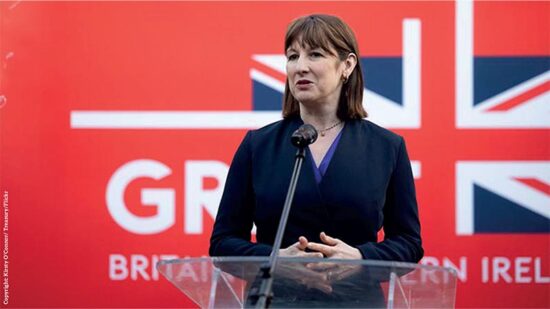Since March, four exchange traded funds (ETF) have come to the marketplace focusing on the defence sector.
The new ETFs from WisdomTree, HANetf, Amundi and BNP Paribas Asset Management are aiming to tap into the high and growing spend on national security and defence in Europe.
At the end of last year, First Trust and Invesco both launched ETFs focusing on global aerospace and defence innovation. According to JustETF, there are now nine specific defence ETFs available for investor wanting to access this theme.
While you could certainly argue there is a solid investment case – with Europe planning to spend over €800bn on defence by 2030 – are ETFs like these the best way to access the opportunity? Is there a better way to access hot investment ideas than through niche, single-theme funds, or do they have a place in portfolios?
$1bn AUM in the first month
Al-Amin Miah, ESG fund research associate at MainStreet Partners, explained that the purpose of these funds is to gain targeted exposure to companies “rapidly increasing spending in defence and security in Europe and allied nations.” He pointed out that governments have typically invested in rearmament historically during times of heightened geopolitical risk, so the theme is not new.
Investors might use these funds as “opportunistic plays” in portfolios, he suggested, allocating a small portfolio of overall assets to bring diversification. “WisdomTree has been quoted as saying that ‘investors are turning to dedicated defence funds to gain targeted exposure to a sector supported by long-term government spending and strategic autonomy initiatives’. In short, what is seen as a niche tactical trade by some is becoming a more popular strategic move for others,” he said.
WisdomTree’s European Defence ETF took more than $1bn in AUM in its first month of trading, Miah added, showing that investor appetite for defence stocks is huge and growing. This is the case even though defence remains a small part of developed market indices, at less than 5% in Japan, Europe and the US.
“While they hold a small representative weight recent performance, and the political environment have drawn attention and defence ETFs are being viewed as strategic and potentially valuable additions to portfolios,” said Miah.
Decades of under-investment
Ida Troussieux, senior ETF investment strategist at Amundi, said the theme should also have legs over the long term too as Europe looks to make up for years of under-investment. “The European bloc has adopted a dramatic shift towards greater levels of defence spending this year, in a bid to respond to NATO commitments and achieve self-reliance amid mounting threats.
See also: Janus Henderson launches active fixed income ETF
“With US security guarantees increasingly uncertain, Europe is scrambling to repair decades of chronic underinvestment through a raft of massive spending measures designed to bolster defensive capabilities in the face of rising geopolitical instability.
“As Europe embraces a more coherent security policy, with broad support for vast additional defence spending and fiscal stimulus, European defence stocks offer investors a strong opportunity to gain exposure to a segment of the market with long-term growth potential.”
Quick access to a theme
Niche ETFs like these can give investors exposure to a theme at a low cost, and are easily tradeable. This is why they remain a popular choice, said Sophie Outhwaite, senior research analyst at Quilter.
“I fully understand the appeal for investors looking to access emerging themes quickly and comprehensively. Niche thematic ETFs offer broad exposure to a trend, often at a lower cost than active management. However, buyers should approach with caution.
See also: ‘Beginning of new era’ for UK pensions with £25bn megafunds plan
“Purity is a key consideration—while some sectors, like defence, provide reasonable transparency on revenue exposure, not all companies within an ETF are pure-play, and not all break down their revenues by specific themes.”
She also urged investors to consider concentration risk, noting that ETF performance can sometimes be “disproportionately influenced by a few larger companies rather than the theme itself”.
Double exposure
Ben Yearsley, investment consultant at Fairview Investing, said he would worry in using these very niche thematic funds that you could end up with too much exposure to a single theme. “They are very specific and, as with most sector-specific investments, the big risk from a portfolio construction viewpoint is doubling up of exposure with generalist funds you already own,” he said.
Outhwaite agreed it’s important to consider diversification as investors may already have exposure to the theme through other funds they hold. She also suggested investors consider whether active managers might provide more targeted stock selections.
All about timing
Investors considering defence funds right now should think about timing, the experts suggested. Defence stocks have already rallied, so have those investors jumping in now already missed the boat? “Timing is everything,” said Outhwaite. “ETFs tend to emerge when demand is high, often after a theme has been performing well. As always, past performance is no guarantee of future returns.”
But Miah argued that, even though some of the easy gains may have been had, defence could still be a solid longer-term investment. The sector’s fundamentals are underpinned by multi-year procurement cycles, creating a long-term growth story. This could mean defence becomes a more significant portion of asset allocation models in future, he said.
This story was written by our sister title, Portfolio Adviser








